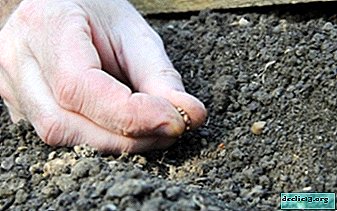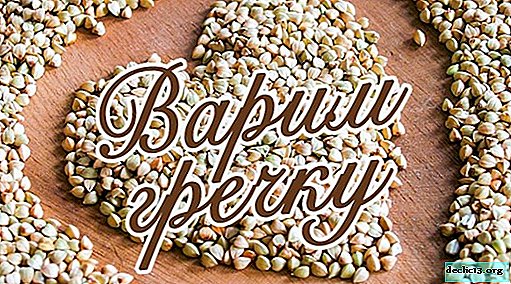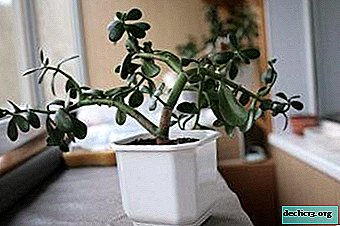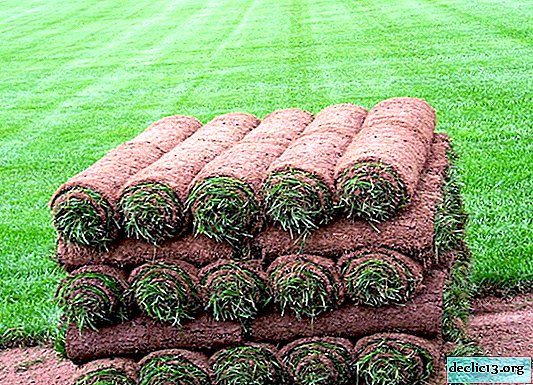Note to gardeners: at what temperature does radish grow, does it withstand frosts?

Radish is sold in stores all year round, but you want to grow it yourself. This plant can be planted in the garden, in the greenhouse and even on the windowsill, it is important to take into account its features, one of them is a requirement for temperature.
Is the vegetable afraid of frosts and is there a difference when growing this root crop at home in the garden or in the greenhouse, at how many degrees can be sown in open ground? You will find answers to these and other questions in this article.
Why are temperature readings important?
Radish - a culture undemanding to heat, on the contrary, an increase in temperature is undesirable for him. It easily tolerates cooling and even short frosts, but it slows down growth.
At rates above + 25 ° C, the plant grows rapidly, forms a powerful tops, instead of root crops, and begins to prepare for flowering. The appearance of the arrow makes it stiff and fibrous, unsuitable for food.Is there a difference when growing at home, in the soil in the garden, in the greenhouse?
You can grow radishes in different conditions, but everywhere the main requirements will be temperature and lighting. At home and in the greenhouse you can adjust the temperature, on the street you should carefully choose the time of sowing.
 The best time for planting radishes in open ground is early spring or late summer, when temperatures are low and daylight hours are less than 12 hours (this is a short daylight crop).
The best time for planting radishes in open ground is early spring or late summer, when temperatures are low and daylight hours are less than 12 hours (this is a short daylight crop).
With any method of cultivation, the temperature should not be higher than + 20-23 ° C. Thermal conditions with temperature differences day and night are desirable. The best conditions at night are + 5-10 ° C. Therefore:
- If cultivation is carried out at home, at night, containers with radishes should be taken out to a glazed balcony or loggia.
- When growing a crop in a greenhouse, it is good to sow it in early spring, when in the afternoon the air warms up under shelter to + 10-15 ° C, nighttime temperature reduction will be useful for radishes. A rise in temperature above + 20 ° C will accelerate growth, but will make root crops more loose.
Minimum and maximum indicators that the radish can withstand
Radish easily withstands low air temperatures and even light frosts. At + 1-2 ° C it will grow, but very slowly. Heat for this culture is more harmful than cold. If the air warms above + 25 ° C, the radish will not die, but will not yield a crop, it will bloom.
At how many degrees can you sow in open ground?
Now we will consider, at what temperature of the soil it is possible to sow a radish, at how many degrees it sprouts. Sowing radishes in open ground can be carried out in early spring, as soon as the soil temperature reaches + 2-3 ° C, that is, almost immediately after the soil has thawed. The daily air temperature by this time already reaches + 8-10 ° С. It warms up during the day, reaching + 15 ° С, at night it drops to + 5-7 ° С. Such fluctuations during the day are not terrible for the culture, but even useful.
Falling temperatures below 0 ° C will not harm plants.Spring crops are also in a favorable position due to the fact that daylight hours are still quite short and the main pest of the crop, the cruciferous flea, has not appeared. At higher temperatures, it causes great damage to radishes.
What is the optimal temperature regime?
 Despite the fact that radishes grow even in the cold, the best conditions will be at + 15-18 ° C, moderate heat allows you to grow large, juicy, dense root crops. In the heat, the radish grows rapidly, but immediately begins to shoot and use it for food does not work - it becomes stiff and fibrous. At low temperatures, it grows more slowly and the harvest will have to wait longer.
Despite the fact that radishes grow even in the cold, the best conditions will be at + 15-18 ° C, moderate heat allows you to grow large, juicy, dense root crops. In the heat, the radish grows rapidly, but immediately begins to shoot and use it for food does not work - it becomes stiff and fibrous. At low temperatures, it grows more slowly and the harvest will have to wait longer.
The end of summer or the beginning of autumn is the second convenient season for planting radishes:
- moderate heat;
- shortened daylight hours;
- sufficient hydration.
At how many degrees does the radish rise and grow?
Germination of radish seeds occurs at different temperatures at different times. The lower the temperature, the longer the waiting period for seedlings.
Seed germination
You can sow radishes immediately after the snow has fallen. The minimum temperature of the soil for sowing is + 2-3 ° C, respectively, the air is warmed below + 10 ° C. Under these conditions, seedlings will appear no earlier than two weeks. In a week, seeds will sprout when the air warms up to + 10-15 ° C and soil + 7-10 ° C. In warmer conditions (+ 15-20 ° C), germination will occur in 3 days. To seedlings do not stretch it is better to sow radishes early.
In the greenhouse, it is recommended to sow immediately after thawing the soil.One way is sowing in the snow. A layer of snow is poured onto the soil surface and seeds are scattered on it. Together with melt water, they flow into the ground.
Seedling growth
 After emergence, the plant begins to grow. At + 10 ° C, radish grows well in open ground. Differences in daytime and nighttime temperatures of 5 ° C are favorable for him, which is typical for spring. The best conditions for growth are + 15 ° during the day and + 10 ° C at night.
After emergence, the plant begins to grow. At + 10 ° C, radish grows well in open ground. Differences in daytime and nighttime temperatures of 5 ° C are favorable for him, which is typical for spring. The best conditions for growth are + 15 ° during the day and + 10 ° C at night.
If the cultivation is in the greenhouse, then when it is very warm, after the emergence of seedlings, it is recommended to open the window or door for the day to lower the temperature, otherwise the shoots will stretch out a lot.
Intensive development
With further warming, growth naturally increases, intensively gaining mass of tops, and the taste of the root crop decreases.
At a temperature of + 25 ° C and above, the root crops are loose, and the plant quickly proceeds to flowering.Is the vegetable afraid of frost or not?
The main advantages of radish are its frost resistance and early maturity. The seeds sown in early spring easily tolerate frosts down to -5-6 ° С and after that they give good shoots. Radishes can be sown before winter, in the soil the seeds are preserved and germinate in early spring. Shoots and adult plants do not die when frozen to -6 ° C.
At the same time, root crops do not lose their qualities, but become even more juicy and tasty. Short-term frost radishes easily, but with prolonged cooling, growth sharply slows down or stops and the taste of the root crop deteriorates.
The consequences of violation of the optimal regime
When deviating from optimal for radish + 15-18 ° С:
- In the direction of increasing temperature growth is accelerating, but the quality of the root crop is deteriorating.
- When lowering - growth slows down, but the root crop turns out more delicious.
- Heatwave will cause flowering, and long periods of freezing temperatures will lead to cessation of growth and loss of yield.
Radish is an undemanding garden crop. When growing, you should first of all remember the temperature regime favorable for its growth and the duration of daylight hours. Following these simple rules will allow you to grow a good harvest.

















